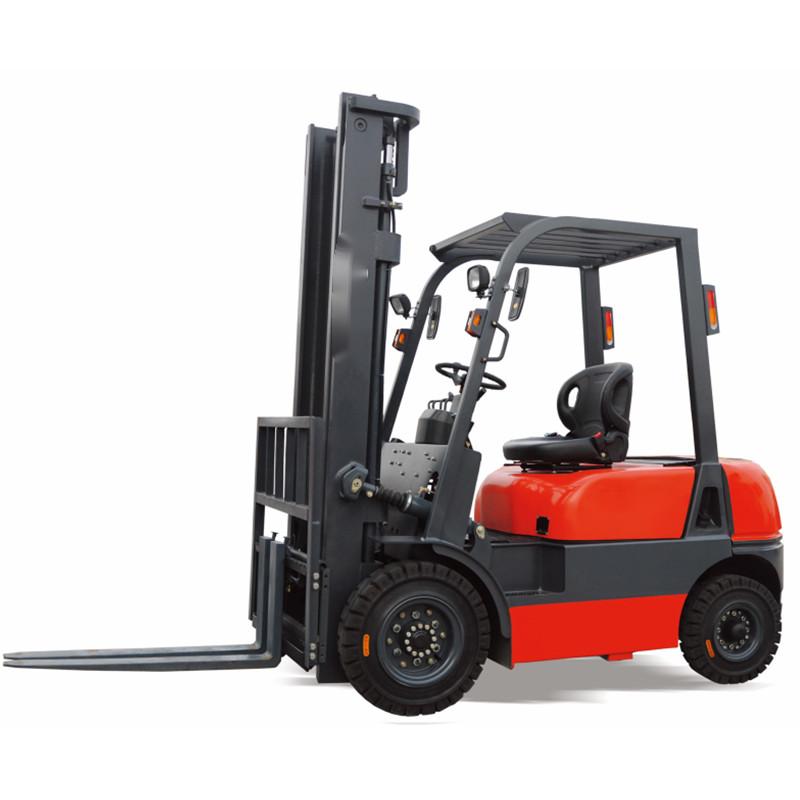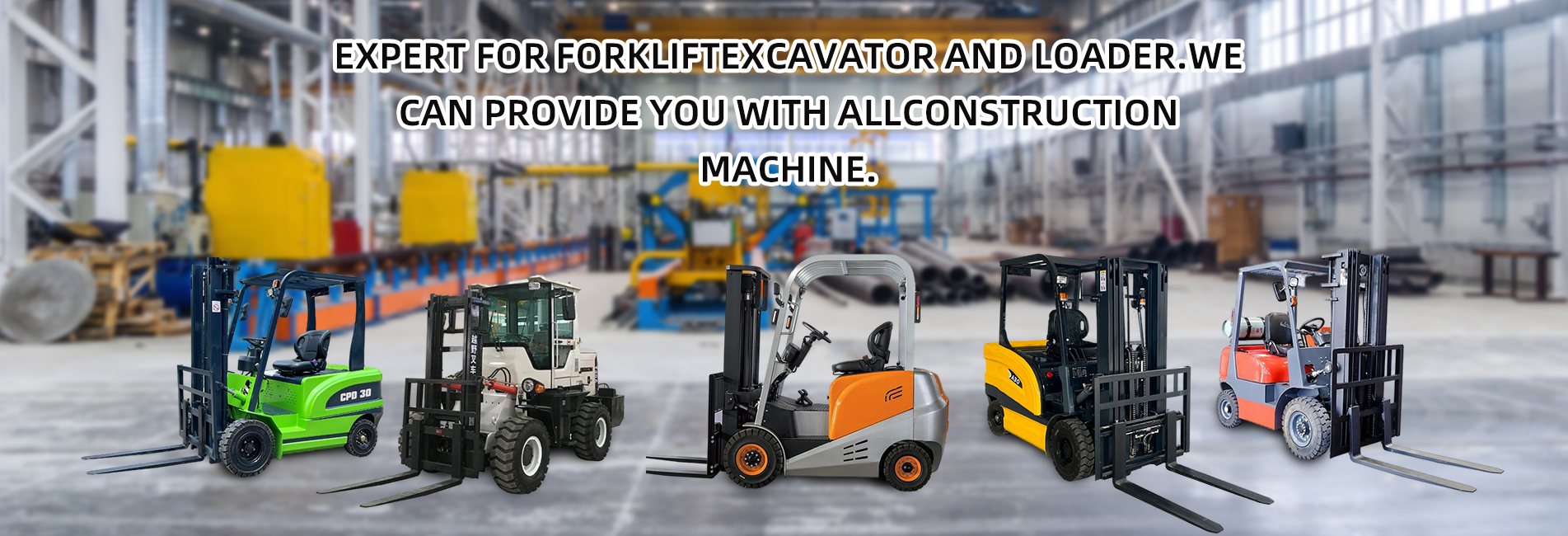Although electric forklifts have significant advantages in terms of environmental protection, noise reduction, and long-term operating costs, they are still unable to completely replace fuel-powered forklifts due to limitations in technical characteristics, usage scenarios, and practical needs. The core reason for this phenomenon lies in the irreplaceability of their respective applicable scenarios, which can be analyzed from the following aspects:

1. Limitations of operating environments restrict the applicability of electric forklifts
- Shortcomings in complex terrain and outdoor scenarios
Electric forklifts (especially battery-powered ones) have high requirements for ground flatness and environmental cleanliness. In outdoor complex scenarios such as construction sites, mines, muddy grounds, and gravel roads, the chassis and batteries of electric forklifts are susceptible to bumps, dust, and stagnant water, which may cause circuit failures, battery moisture, or shortened service life. In contrast, the mechanical structure of fuel-powered forklifts is more wear-resistant and impact-resistant, and can adapt to harsh environments such as high and low temperatures, heavy dust, and humidity. For example, in the low-temperature environment of northern winters, the starting stability of fuel engines is far better than that of batteries (low temperatures will cause a sharp drop in battery capacity and a significant reduction in 续航). - Strong dependence on power infrastructure
Electric forklifts require stable charging facilities and take a long time to charge (usually 1-2 hours for fast charging and 6-8 hours for slow charging). In remote areas, temporary work sites (such as field construction, rural logistics points) or scenarios with unstable power supply, the lack of charging piles or insufficient power supply will directly prevent electric forklifts from working normally. Fuel-powered forklifts, on the other hand, only need simple oil storage equipment for refueling and have extremely low dependence on infrastructure.
2. Gap in matching between power performance and operation intensity
- Insufficient capacity for high-intensity and continuous operations
The power output of electric forklifts is limited by battery capacity and discharge efficiency. In scenarios involving long-term continuous heavy-load operations (such as full-load handling for more than 8 hours), frequent climbing (with slopes exceeding 15°), or instantaneous high loads (such as rapid lifting of heavy objects), their power continuity and explosive force are weaker than those of fuel-powered forklifts. For example, when transporting heavy objects such as steel bars and cement at construction sites, the engines of fuel-powered forklifts can provide more stable torque, while electric forklifts may experience power attenuation due to battery voltage drop, affecting operation efficiency. - Critical flaws in endurance and refueling efficiency
Even lithium-battery electric forklifts can typically only support 4-6 hours of medium-intensity operations on a full charge. To extend working hours, spare batteries or work interruptions for charging are required. Fuel-powered forklifts, however, can be fully refueled in only 5-10 minutes, making them particularly suitable for scenarios such as logistics hubs and freight stations that require 24-hour shifts, avoiding work interruptions caused by energy replenishment.
3. Differences in usage costs and maintenance across scenarios
- Mismatch between initial investment and usage scenarios
The initial purchase cost of electric forklifts (especially lithium-battery models) is 30%-50% higher than that of fuel-powered forklifts of the same tonnage. For short-term projects (such as temporary construction sites, seasonal warehousing), small enterprises with limited budgets, or scenarios with low operation frequency and short single operation time, fuel-powered forklifts have a more obvious cost advantage, eliminating the need to bear high battery purchase and charging pile installation costs. - Convenience of maintenance and regional restrictions
Battery maintenance and motor overhaul of electric forklifts require professional technology and equipment. In towns and remote areas with scarce maintenance resources, troubleshooting is difficult and time-consuming. Fuel-powered forklifts, with their simple mechanical structure and mature maintenance technology, allow ordinary technicians to perform maintenance such as oil changes and filter replacements, and their parts are easily available, making them more suitable for scenarios with limited maintenance conditions.
4. Rigid demands of special industries
In industries such as agriculture, mining, and heavy manufacturing, operating environments are often accompanied by dust, oil pollution, high and low temperatures, and frequent switching between indoor and outdoor operations. For example:
- When transporting chemical fertilizers and feed on farms, the batteries of electric forklifts are prone to dust erosion;
- When transporting ores over short distances in mines, bumpy roads may cause circuit failures in electric forklifts;
- When small machinery factories work overtime at night, if the power supply is unstable, fuel-powered forklifts can ensure uninterrupted operations.
In these scenarios, the durability and adaptability of fuel-powered forklifts cannot be temporarily replaced by electric forklifts.
Summary
Electric forklifts and fuel-powered forklifts are not in a "substitution relationship" but a "complementary relationship": electric forklifts are more suitable for medium and low-intensity operations in enclosed, clean, and fixed sites (such as food workshops and e-commerce warehouses); fuel-powered forklifts are irreplaceable in outdoor, complex environments, and high-intensity continuous operations. With the improvement of battery technology (such as endurance and low-temperature performance) and charging facilities, the applicable scope of electric forklifts will gradually expand. However, as long as there are rigid demands for power, environmental adaptability, and refueling efficiency, fuel-powered forklifts will still have their value.


